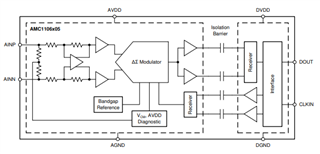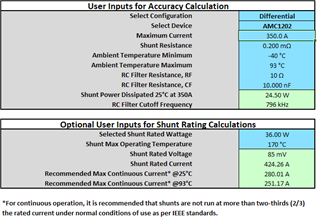Hello Team, my customer needs support on shunt resistor configuration
Target is to achieve a measurement range of +/-350A-p (referred to +/-64mV). Shunt selection is difficult because only certain standard values are available. (100/200/300/500uOhm).
For this purpose a 180uOhm would be a perfect fit but preferred is 200uOhm (simpler available). But this means using a voltage divider of 10/90 ratio in front of the input stage.
Now the question:
- In the datasheet there is an input resistor of 4.9kOhm specified. Can this one be used with a 270 Ohm resistor on each input (560Ohm total)?
- Is the accuracy/tolerance of this 4.9kOhm in range of <1%?
- Or is it better to put 560 Ohm at AINP and AINN on GND?
- Other solution would be with a real voltage divider such as 1+20+1 Ohm and connect 20 Ohm at AINP/N?
Many Thanks for any proposal or other ideas to simplify the shunt resistor selection
Josef



